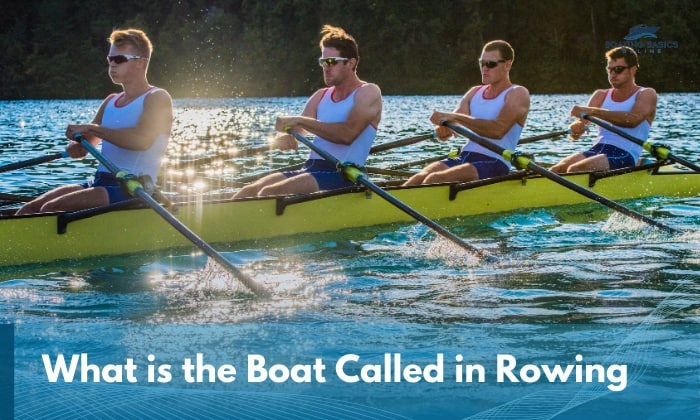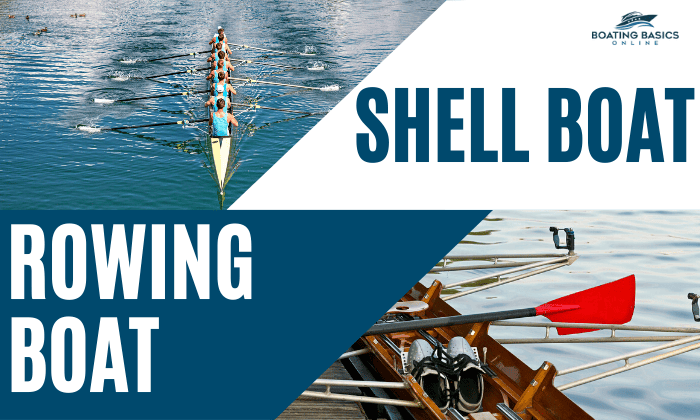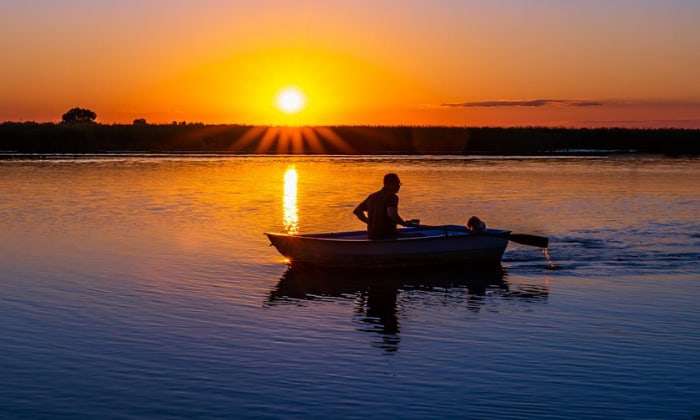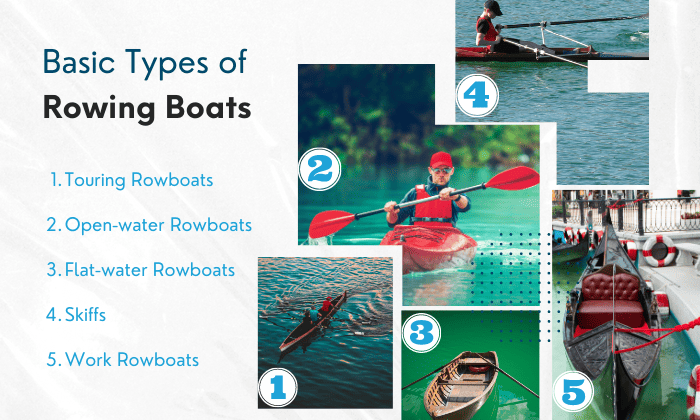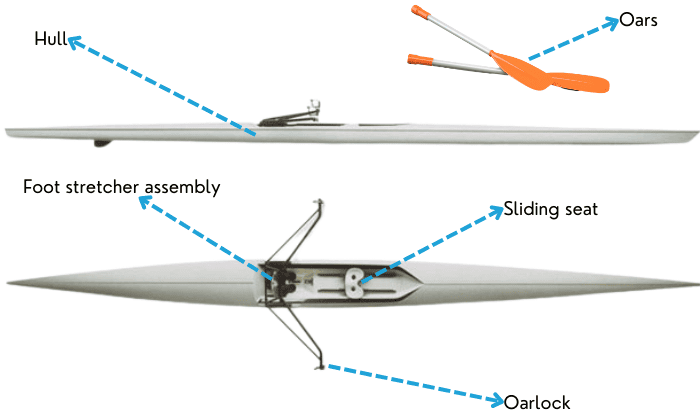If you’ve ever wondered, “What is the boat called in rowing?”, allow me to take you through a bit of rowing lore with this post. Officially, the term for it is a “shell”, but calling it just a “rowing boat” will suffice.
People confuse it for other terms like “scull”, but that actually refers to the oars used for a type of rowing (sculling).
For a boatload of trivia regarding the term’s historical significance, types, and other considerations, continue reading.
Table of Contents
Names for Rowing Boats
Part of the reason why people get confused about what to call a rowing boat is that there are numerous synonyms for it in the English language – Merriam-Webster lists up to 75, in fact! Folks are more than happy to call a boat with oars either a scull, dinghy, paddleboat, raft, canoe, or flatboat, among others.
However, in the context of this question, it’s understood that you’re referring to rowing as a sport.
Rowers assign various row boat names to their vessels, from the more serious nicknames like Wind Skimmer and Star Seeker to more tongue-in-cheek ones like Clusterfuck and Three’s a Crowd.
Generally speaking, Olympic rowing boats have always been referred to as “shells”, “racing shells”, or simply put, just plain, old “boats” – and nothing else!
The term “shell” is unique to the sport, though. Let’s find out why it got that nomenclature – knowing full well that it could be confused for a protective covering or explosive projectile.
The Historical Significance of the Term “Shell”
Rowing has been practiced for centuries, and this rich history has undoubtedly played a role in the sport developing a language of its own. The term “racing shell” is at the forefront when it comes to this topic.
Firstly, it refers to the unique design of the boat. Racing shells distinguish themselves with their thin, narrow hulls, which have been their design since their inception in the 19th century.
As such, it didn’t take long for boaters to liken it to an eggshell. That’s undoubtedly the more on-the-nose connection and explanation for the nomenclature.
True enough, the original racing shell boat in rowing was said to have had such a fragilely thin hull that one wrong step from the rower could result in a hole in the hull in seconds!
So, on the whole, the term “shell” relates mainly to the hull of this particular sports watercraft. Incidentally, if you look it up, a hull is also synonymous with a shell!
Basic Types of Rowing Boats and Their Functions
A standard rowing boat can either be a sculling boat or a sweeping boat. If you’ve ever watched a rowing competition live, you’ll typically see it divided into sculling and sweeping events.
- The single basic distinguishing factor between a sweeping boat and a sculling boat is the number of oars used.
- A sweeping boat uses one oar, held with both hands by the rower.
- In a sculling boat, the rower uses two oars handled by each hand.
So if you’re wondering about the difference between rowing and sculling, know that sculling is still a form of rowing. You’re just using two hands for two oars to do it.
Besides these two basic types, these are the other kinds of rowboats and their respective main functions:
- Touring Rowboats – Lightweight and highly maneuverable, these vessels are mainly designed for recreational activities and touring adventures.
- Open-water Rowboats – Ideal for rowing in choppy waters, these lightweight and speedy shells figure a lot in endurance races.
- Flat-water Rowboats – Best suited for smooth water, these shells are made to maximize speed rather than maneuverability.
- Skiffs – These are perfect options for those just starting out in rowing as they’re well-designed for ensuring stability with each stroke.
- Work Rowboats – These serve a more practical purpose, particularly transporting numerous goods and other applicable loads.
Based on the Number of Rowers
Sweeping boats and sculling boats can further be subdivided into categories based on the number of people in the crew boat rowing. If you look closely, most rowing boat sports teams have an even number of members – except for single sculling boats.
Before I explain each type, you need to first know what a coxswain in rowing is. Basically, they’re the person in charge of steering the boat but aren’t counted as part of the team’s tally of members.
Types of sculling boats
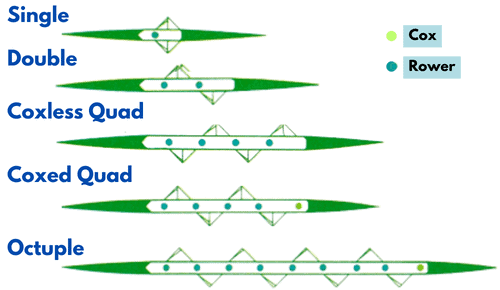
- Single
A 1-person boat steered by the rower, who varies the pressure they put on either blade in the water.
- Double
A 2-person boat steered by rowers who change the pressure put on the oars in the water.
- Coxless Quad
4-person sculling vessel with no coxswain. One of the rowers has a rudder connected to their shoe.
- Coxed Quad
A 4-person vessel manned by a coxswain, and he or she is in charge of steering with a rudder attached to cables.
- Octuple
8-person boat with a coxswain and steered using the same procedure as a coxed quad.
Types of sweeping boats
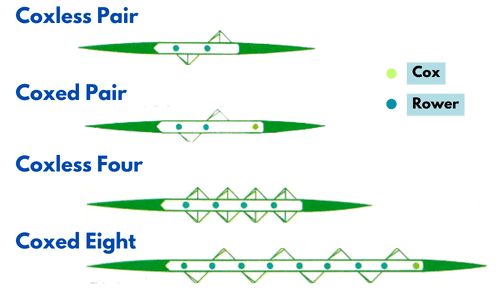
- Coxless Pair
2-person boat without a coxswain. Steered similarly to any coxless vessel.
- Coxed Pair
2-person boat steered by a coxswain, and in the standard way as any coxed boat.
- Coxless Four
4-person vessel steered without a coxswain. Steered in the same manner as any coxless boat.
- Coxed Eight
8-person sweeping boat aided by a coxswain. Steered the same way as any coxed vessel.
Anatomy of a Rowing Boat
The parts of a rowing boat and the typical rowing equipment can be summed up as follows:
- Hull: The boat’s main body that provides support for the athlete and helps propel the vessel through the water. The hull’s shape greatly impacts the boat’s performance in certain water conditions.
- Foot stretcher assembly: Allows the rower to use their legs to generate power.
- Sliding seat: Ensures that the rower will be able to move their body weight forward and backward for the optimal stroke.
- Oarlock: Keeps the oar attached to the boat, so the rower can comfortably propel the boat forward.
- Oars: Used to propel the boat.
Conclusion
To recap what we’ve discussed when answering the query, “What is the boat called in rowing?”, always remember to call it a shell. To be safe, you can call it just a boat, rowing boat, or rowboat.
The term arose from the eggshell analogy used to describe the qualities of the vessel’s hull. It evidently stuck, since most people in the industry still refer to these boats as racing shells even after years have passed.

“My intention from the first day establishing Boating Basics Online is to provide as much help as possible for boaters who want to experience a first safe and convenient trip. So feel free to join us and share your beautiful journeys to the sea!”

